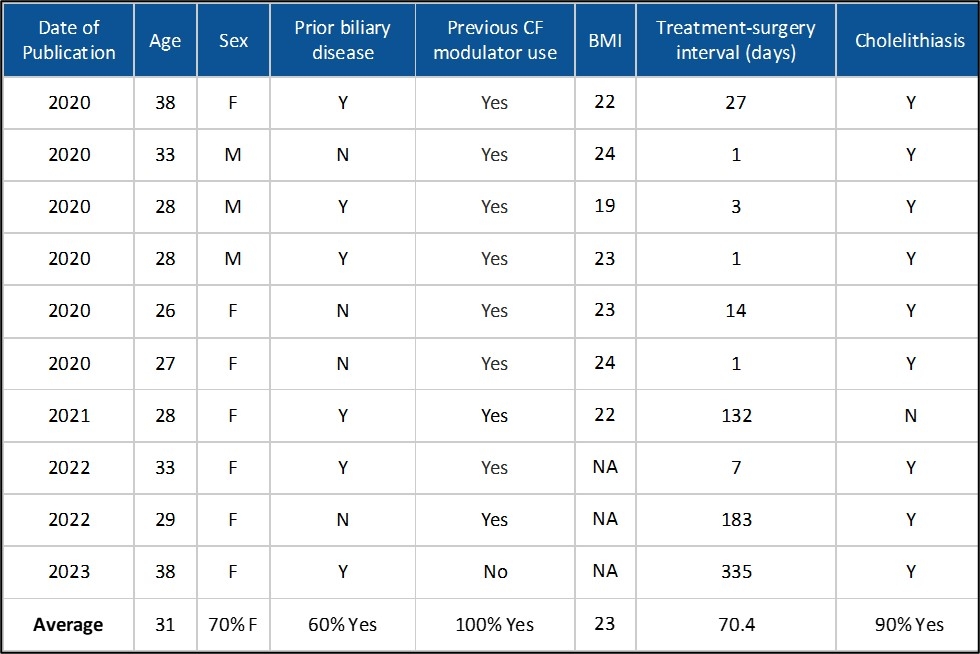Background: Surgical interventions for patients with cystic fibrosis require careful preoperative evaluation and preparation to assure safe and optimal patient outcomes. The introduction of elexacaftor, tezacaftor, and ivacaftor (ELX/TEZ/IVA) as triple therapy for cystic fibrosis has been suggested to be associated with an increased incidence of biliary disease requiring surgical intervention. This is offset by the remarkable improvements in cystic fibrosis symptoms in patients who tolerate triple therapy. Dysfunction of chlorine transporters in cystic fibrosis is known to interrupt the alkalinization and hydration of bile within the gallbladder and biliary tree, resulting in an increased incidence of gallstone formation. However, there is limited detail in the literature describing their impact on surgical biliary disease management. Current discussions are limited to case-specific outcomes and theory.
Objective: Our objective was to analyze surgical outcomes in cystic fibrosis patients treated with ELX/TEZ/IVA reported in the literature to require cholecystectomy.
Methods: This preliminary literature review investigated clinical trials and individual case-studies. We followed PRISMA guidelines that directed the identification of clinical trials. We limited our literature review to reports published in the English language after January 1st 2019.
Results: Other investigators have reported that 102 patients out of 11,951 required cholecystectomy after initiating ELX/TEZ/IVA triple therapy. We have identified an additional 10 patients in the literature who required cholecystectomy within 1 year of initiating triple therapy. Seven of these patients were female, and the average age was 31 ± 5 years. Six patients had prior biliary disease. Nine of the ten patients were previously treated by disease-modifying agents prior to starting triple therapy. The average interval between the initiation of triple therapy and surgery was 70 days. 50% of patients presented with an exacerbation of chronic disease. Of the five patients who presented with acute cholecystitis, three presented during a pregnancy. No thirty day complications were reported in this cohort.
Conclusion: Despite major clinical improvements reported following initiation of ELX/TEZ/IVA in patients with cystic fibrosis, case-reports continue to be registered where surgical intervention is required for biliary disease after initiating triple therapy. Preliminary review of the literature suggests a relationship between the initiation of triple therapy and the need for cholecystectomy.

Table 1